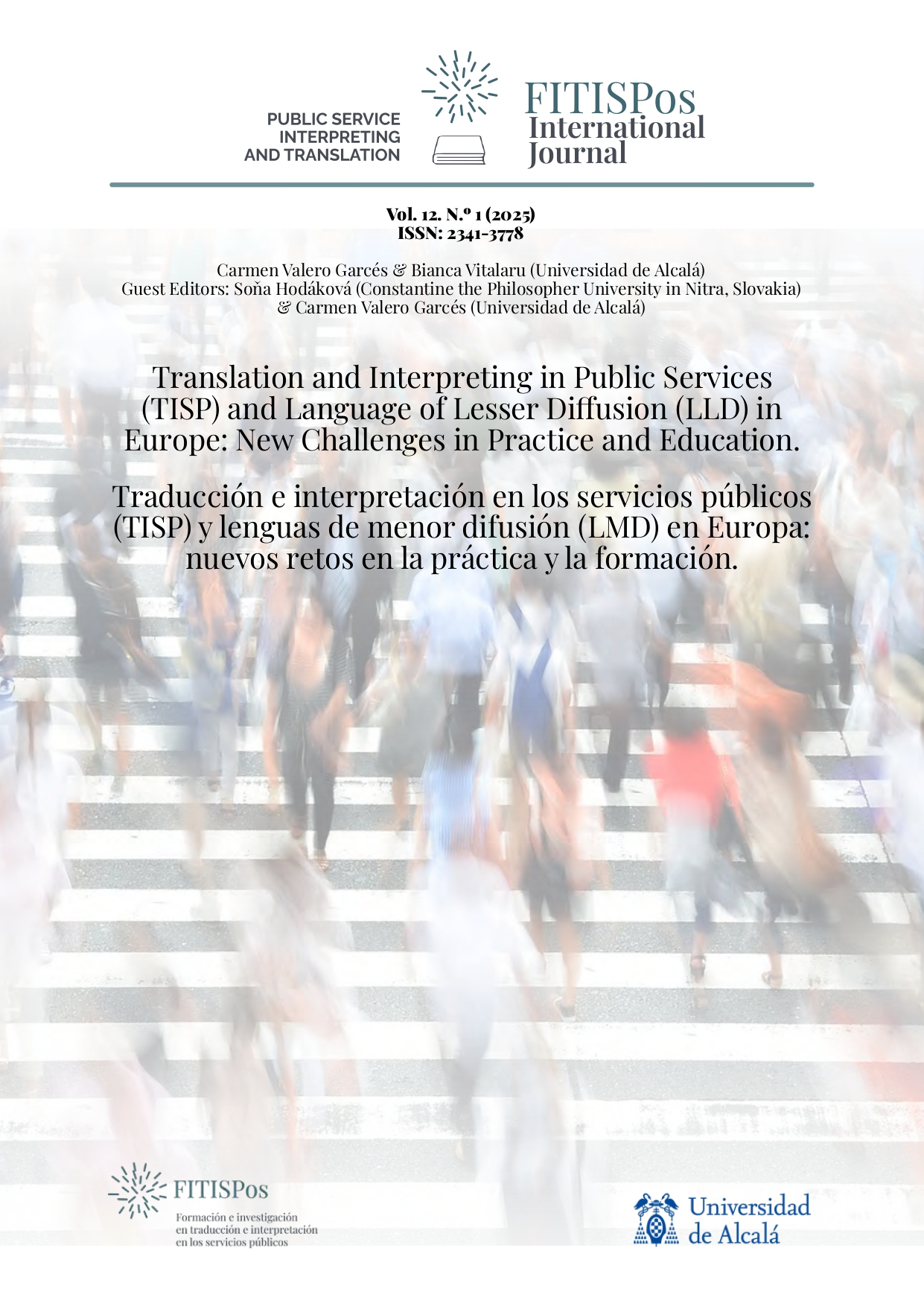Working paper. Revisiting theories on child language brokering: qualitative analysis of the experiences and perspectives of Occidental College’s bilingual students
DOI:
https://doi.org/10.37536/FITISPos-IJ.2025.12.1.425Keywords:
Non-professional interpreting, Non-professional translation and interpreting, Child language brokering, Immigration, Cultural aspects, MediationAbstract
Child language brokering, a form of non-professional translation and interpreting, occurs when a bilingual child carries out interpreting and translation tasks for their family to help them adapt to the communication in the new environment. Since child language brokering occurs in any country hosting migrants, there are a plethora of studies focusing on the most diverse populations. However, the majority of research thus far has centered on U.S. residents of Spanish-speaking origins. In the present study we will analyze said population, although with a new demarcation: our target group are all students at the same college. Through a literature review we identified hypotheses put forward by experts so as to initiate an original qualitative study which will aim to confirm or disprove said ideas. The study, consisting of a preliminary 20-question survey and a subsequent 50-question recorded interview with a sample of 8 participants, will confirm 5 hypotheses and disprove 2. Lastly, we conclude by suggesting new lines of research to delve further into the subject.
Downloads
References
Antonini, R. (2016). Caught in the middle: child language brokering as a form of unrecognised language service. Journal of Multilingual and Multicultural Development. 37. DOI: 10.1080/01434632.2015.1127931.
Antonini, R. & Torresi, I. (2022). What is child language brokering? Why does it exist? In Vargas-Urpí, M., Ribas, M., Antonini, R., et al. Inclusion, Diversity and Communication Across Cultures: A Teacher’s Book with Classroom Activities for Secondary Education. Universidad Autónoma de Barcelona. https://ddd.uab.cat/pub/caplli/2022/259874/inclusio_diversity-80-93.pdf
Faulstich Orellana, M. (2017). Dialoguing across differences. The past and future of language brokering research. In Antonini, R., Cirillo, L., Rossato, L., & Torresi, I. (Eds.), Non-professional interpreting and translation: state of the art and future of an emerging field of research (65-80). Amsterdam: Benjamins Translation Library, vol. 129.
Lian, J. (2019). Reimagining Multilingualism from the Heritage Speaker Perspective: A View of Language Brokering Through the Lens of Translanguaging and Resemiotization. [Dissertation]. Georgia State University. https://doi.org/10.57709/15943116.
McQuillan, J. & Tse, L. (1995). Child language brokering in linguistic minority communities: Effects on cultural interaction, cognition, and literacy. Language and Education, 9(3), 195-215. doi:10.1080/09500789509541413
Tse, L. (1995). Language Brokering among Latino Adolescents: Prevalence, Attitudes, and School Performance. Hispanic Journal of Behavioral Sciences, 17(2), 180-193. https://www.deepdyve.com/lp/sage/language-brokering-among-latino-adolescents-prevalence-attitudes-and-2DdnGG5YQ7?#
U.S. Census Bureau. (s.f.). Los Angeles County, California. https://data.census.gov/profile/Los_Angeles_County,_California?g=050XX00US06037
Vargas-Urpí, M. & Romero-Moreno, A. (2023). La intermediación lingüística por parte de menores (ILM) desde la perspectiva de los progenitores. Papers, 108(4), e3143. https://doi.org/10.5565/rev/papers.3143
Downloads
Published
Issue
Section
License
Copyright (c) 2025 Himar González González

This work is licensed under a Creative Commons Attribution-NonCommercial 4.0 International License.
Authors who publish with this journal agree to the following terms:
a. Authors retain copyright and guaranteeing the journal the right to be the first publication of the work as licensed under a Creative Commons Attribution License that allows others to share the work with an acknowledgment of the work's authorship and initial publication in this journal.
b. Authors can set separate additional agreements for non-exclusive distribution of the version of the work published in the journal (eg, place it in an institutional repository or publish it in a book), with an acknowledgment of its initial publication in this journal.
c. It allows and encourages authors to disseminate their work electronically (eg, in institutional repositories or on their own website) prior to and during the submission process, as it can lead to productive exchanges, as well as to a subpoena more early and most of the published works (See The Effect of Open Access) (in English).



